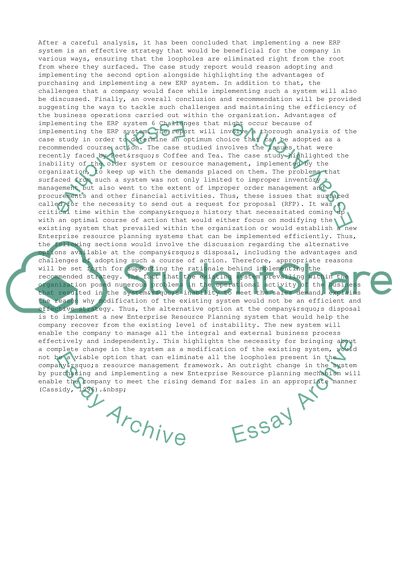Cite this document
(“This ERP case study on why and how Peet's chose its ERP system and Essay”, n.d.)
Retrieved from https://studentshare.org/business/1498485-this-erp-case-study-on-why-and-how-peet-s-chose
Retrieved from https://studentshare.org/business/1498485-this-erp-case-study-on-why-and-how-peet-s-chose
(This ERP Case Study on Why and How Peet'S Chose Its ERP System and Essay)
https://studentshare.org/business/1498485-this-erp-case-study-on-why-and-how-peet-s-chose.
https://studentshare.org/business/1498485-this-erp-case-study-on-why-and-how-peet-s-chose.
“This ERP Case Study on Why and How Peet'S Chose Its ERP System and Essay”, n.d. https://studentshare.org/business/1498485-this-erp-case-study-on-why-and-how-peet-s-chose.


